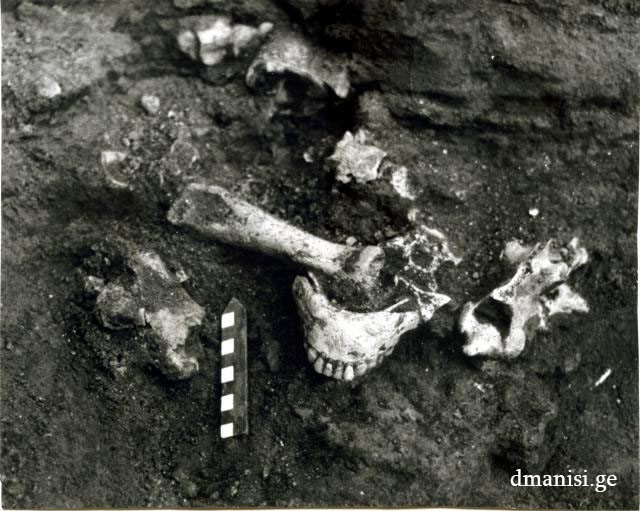About Dmanisi
HISTORY OF DISCOVERY
Dmanisi is located in the Caucasus in the Republic of Georgia, 85 km southwest of Tbilisi.
The early Paleolithic site of Dmanisi was discovered in 1983, beneath the deserted medieval town of Dmanisi. During middle ages, Dmanisi was one of the prominent cities of the day, located along the Silk Road.
 The excavations of the ruins of the medieval dwelling started in 1936, but later in 1983 archeologists found animal fossils in sediments exposed by the medieval cellars, among which Paleontologist Prof. A.Vekua [fig. to the right] identified a tooth of the rhinoceros Stephanorhinus sp., a species that is typical for the Early Pleistocene age. In 1984, first stone tools were discovered.
The excavations of the ruins of the medieval dwelling started in 1936, but later in 1983 archeologists found animal fossils in sediments exposed by the medieval cellars, among which Paleontologist Prof. A.Vekua [fig. to the right] identified a tooth of the rhinoceros Stephanorhinus sp., a species that is typical for the Early Pleistocene age. In 1984, first stone tools were discovered.
 After seven years of excavations, in 1991 the international team discovered a fossil belonging to an early hominin. It was a very well preserved mandible [fig. below] with full set of teeth, dated to ca. 1.7 million years. This mandible was found together with stone tools and numerous fossils of extinct animals. Later, in the summer of 1999, Dmanisi produced two more hominin remains – very primitive and small skulls of the same geological age. These important discoveries have rewritten the history of human evolution.
After seven years of excavations, in 1991 the international team discovered a fossil belonging to an early hominin. It was a very well preserved mandible [fig. below] with full set of teeth, dated to ca. 1.7 million years. This mandible was found together with stone tools and numerous fossils of extinct animals. Later, in the summer of 1999, Dmanisi produced two more hominin remains – very primitive and small skulls of the same geological age. These important discoveries have rewritten the history of human evolution.
Excavations at the site have been ongoing since these important discoveries...
